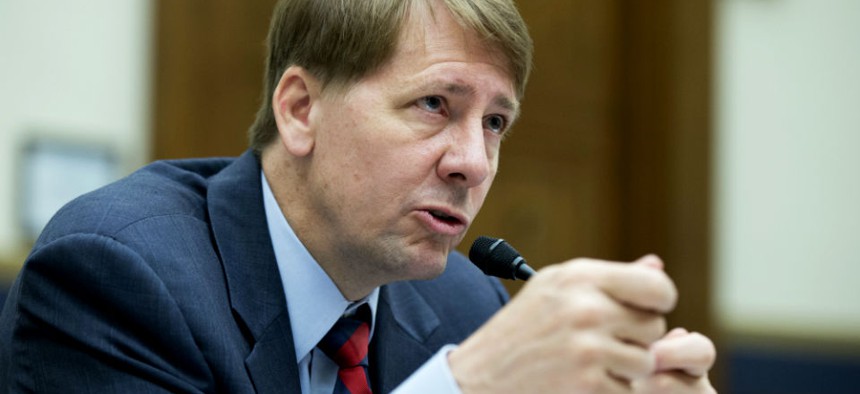
Consumer Financial Protection Bureau Director Richard Cordray Manuel Balce Ceneta/AP
Widespread Discrimination Forces Agency to Create New Pass-Fail Performance Rating System
Agency will spend $5 million to address past disparities.
The Consumer Financial Protection Bureau will launch a new, simplified employee evaluation system after internal audits corroborated allegations that the old system was subject to systemic biases and prejudices.
CFPB will move to a two-tier performance management structure, essentially creating “pass-fail” grading. An internal report earlier this month revealed “broad-based, statistically significant disparities for employees based on a wide range of characteristics,” including race, ethnicity, age, union membership, location, pay rate and tenure.
The announcement, made in an agency-wide email from CFPB Director Richard Cordray, came after a House hearing on the discrimination and on the heels of a follow-up review by the same congressional panel. CFPB negotiated the new system with the National Treasury Employees Union, which represents most of the agency’s workforce.
The bureau will switch from a one-through-five measurement to a two-tier system that is “focused primarily on employee growth and development, with less emphasis on numerical ratings,” Cordray told employees. Additionally, the agency will spend about $5 million on bonuses for every employee --except senior leadership -- who received ratings of three or four in their 2012 and 2013 evaluations. The employees will be compensated in merit and lump-sum payments as if they had earned fives in each of those years.
Benjamin Konop, executive vice president of the NTEU chapter that represents CFPB employees, said his team first raised issues with the agency’s evaluation system in August 2013. At that time, the union was not even aware of the discrimination against women and minorities, Konop said. Instead, the NTEU chapter found significant disparities between management and non-management employees.
When the union first broached the subject of reforming the performance management system, Konop said, CFPB showed little interest. However, when the evidence of discrimination first surfaced in March, the agency changed its tone.
Cordray’s email painted a different picture of the timeline, crediting CFPB with taking the initiative in determining the “systemic disadvantages to various categories of employees.” Both sides, however, expressed optimism for the future of employee evaluations.
The new agreement makes it “a lot clearer for employees what [is] expected of them,” Konop said. “Going forward there will be a lot more interaction between managers and non-managers. And we want that interaction to go both ways.” The previous system did not create “an atmosphere that was conducive to an honest conversation,” Konop added.
NEXT STORY: Untying the Knots in the Federal Hiring Process







